With Frankfurt as my home base, I’ve embarked on countless journeys across the globe. Yet, among the many destinations I’ve explored, one place has resonated with me on a profound level – the enchanting island of Zanzibar. It’s a comprehensive and immersive narrative of my journey to this tropical paradise, where pristine beaches, vibrant coral reefs, and an alluring underwater world converge.
The Magnetic Appeal of Zanzibar
The mere mention of Zanzibar evokes images of swaying palm trees, crystal-clear waters, and the tantalizing scent of spices wafting through the air. Situated in the Indian Ocean, just off the coast of Tanzania, this archipelago comprises two main islands – Unguja (commonly known as Zanzibar) and Pemba. It was the former that beckoned me to explore. What I encountered was nothing short of paradise.
Zanzibar’s Legendary Beaches
My Zanzibar adventure commenced with a landing at Abeid Amani Karume International Airport, a portal to a world of tropical beauty and cultural intrigue. The southeastern coast of the island, renowned for its legendary beaches, was my first destination.
Bwejuu Beach: A Pristine Haven of Tranquility
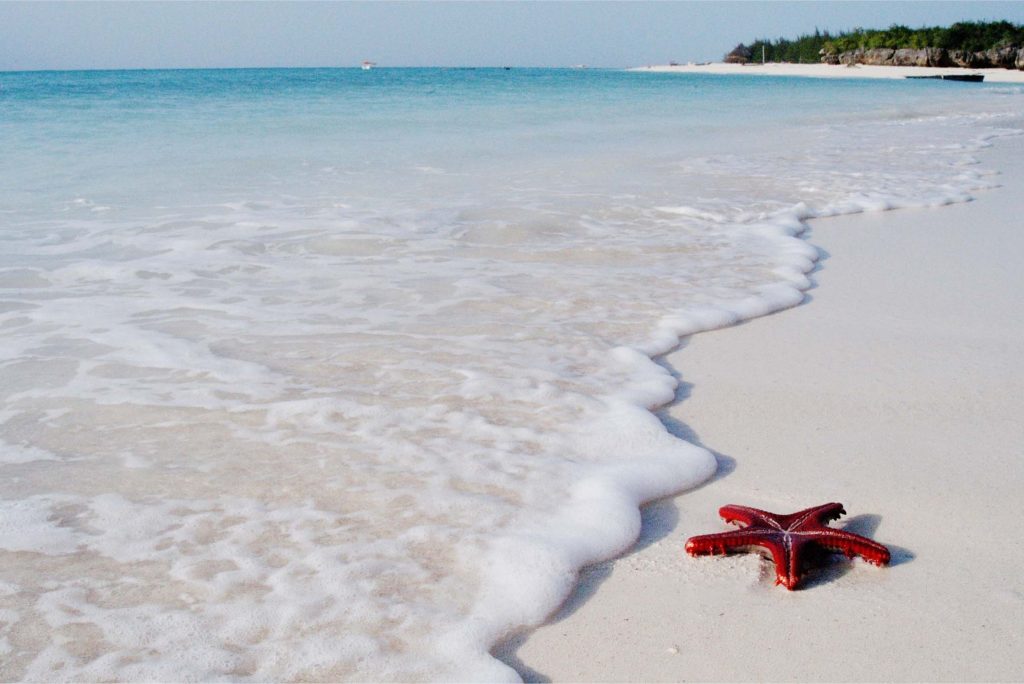
My very first steps on Zanzibar’s shores brought me to the ethereal Bwejuu Beach. It was like stumbling upon a hidden paradise, where the boundaries between dreams and reality blurred. The moment I set foot on the powdery white sand, I knew I had arrived in a place of serenity and unparalleled beauty.
The beach stretched as far as the eye could see, a glistening ribbon of soft, pristine sand. The Indian Ocean, in all its glory, gently caressed the shoreline, creating a mesmerizing symphony with the land. The waters were so crystal clear that one could see the coral formations beneath the surface, adding to the enchantment of the place.
What struck me most about Bwejuu was the profound silence that enveloped the beach. It was as if the world had hushed itself to allow this natural wonder to shine. The only sounds to disturb the stillness were the rhythmic waves, each kiss of the shore a gentle reminder of the timeless dance between land and sea. I found solace in the music of the waves, a soothing lullaby that seemed to speak to the depths of my soul.
The palm trees lining the beach swayed in perfect harmony with the breeze, their fronds casting dappled shadows on the sand. It was an invitation to take refuge in the shade, to listen to the secrets of the trees, and to marvel at their resilience in the face of the ever-present ocean breeze. This serene natural canopy offered moments of cool respite, a place to recline and gaze upon the ocean’s infinite expanse.
Every detail of Bwejuu Beach contributed to its status as a postcard-worthy paradise. It was a place where time seemed to stand still, allowing travelers like me to reconnect with nature and find tranquility in its simplest form. The beauty of Bwejuu was pure, unadulterated, and a testament to the wonders that nature can bestow upon us.
Jambiani Beach: A Cultural Tapestry by the Sea
Just a stone’s throw from the serene Bwejuu Beach lies the vibrant tapestry of Jambiani Beach. Jambiani is not just a beach; it’s a bustling fishing village where the local tradition of seaweed farming thrives. As I ventured into the heart of Jambiani, I was greeted by the warmth of its people and an authentic curiosity about my travels. This immersion into the local culture added an extra layer of authenticity to my Zanzibar experience.
Walking through the winding alleys of Jambiani, I encountered the rhythm of daily life on the island. The village hummed with activity as fishermen mended their nets, children played in the sandy streets, and the aroma of Swahili cuisine wafted from open kitchens. I was no longer a mere visitor but a participant in the daily narrative of this remarkable village.
Seaweed farming, a centuries-old tradition, was an integral part of Jambiani’s identity. The sight of women in vibrant traditional clothing tending to their seaweed farms on the shallow seabeds was both fascinating and heartwarming. Their dedication to this trade was evident, and their smiles as they worked spoke of an enduring connection to the sea.
Engaging with the locals, I learned about the significance of seaweed farming to the community and its contribution to the island’s economy. This was not just a tourist attraction; it was a way of life, deeply rooted in tradition. The experience allowed me to appreciate the cultural richness of Zanzibar on a profound level, connecting with the people who call this island home.
Kendwa Beach: Nightly Revelry under the African Sky
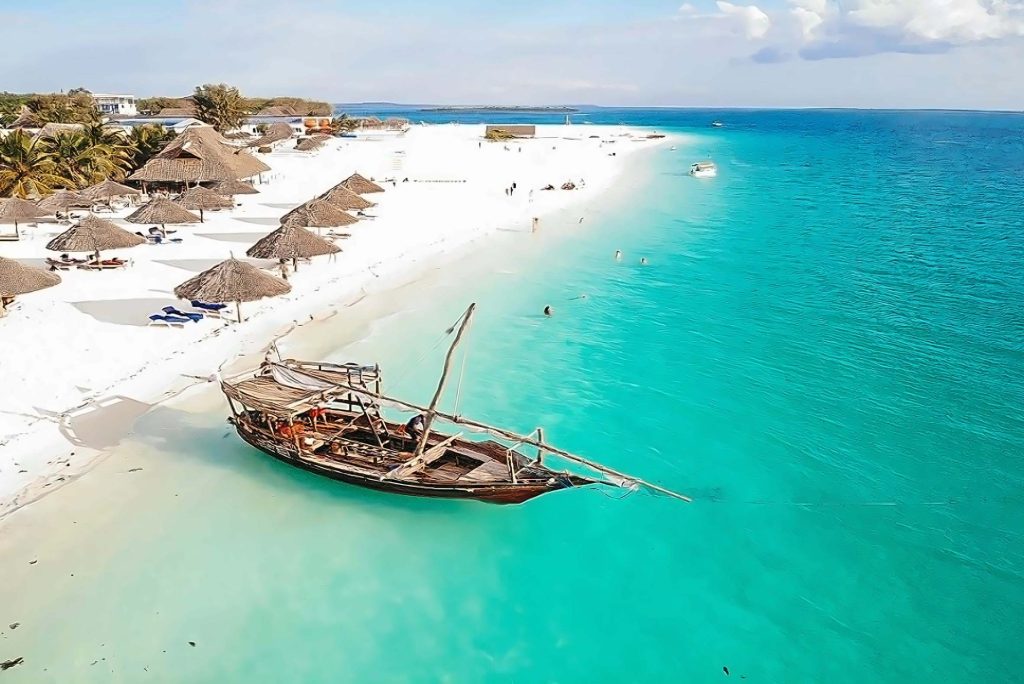
For travelers seeking a livelier atmosphere, Kendwa Beach on Zanzibar’s northwest coast was an eye-opening revelation. Known for its lively beach parties and the most awe-inspiring sunsets, Kendwa beckoned to those in search of both daytime adventure and nocturnal excitement.
By day, Kendwa was a vibrant hub of water sports, beach volleyball, and tanning sessions under the African sun. The beach was adorned with colorful umbrellas, and the air was filled with the laughter of travelers from around the world, each brought together by their shared appreciation for Zanzibar’s beauty.
However, it was the evenings at Kendwa that truly set the beach apart. As the sun dipped below the horizon, the sky painted itself in shades of orange, pink, and purple, casting a warm glow over the beach. It was a time when Kendwa transformed into a magnet for backpackers, party enthusiasts, and anyone in pursuit of a lively night.
Under the star-studded African sky, Kendwa Beach hosted beach parties that danced to the rhythm of the ocean. The sound of live music, the sway of bodies, and the laughter of friends filled the air, creating an atmosphere of pure joy. It was a place where travelers came together to celebrate the beauty of Zanzibar, where the island’s magic was felt not only in the daylight but also in the pulsating energy of the night.
Coral Reefs and the Art of Snorkeling
Zanzibar’s coral reefs were an irresistible siren’s call. The island is surrounded by vibrant coral gardens teeming with marine life. Embarking on a snorkeling adventure, I was about to discover an entirely new dimension of beauty beneath the waves.
Mnemba Atoll: A short boat ride from Zanzibar’s northeastern coast transported me to the Mnemba Atoll, a marine conservation area. The coral reefs here were a kaleidoscope of colors and life. As I descended into the water, I found myself enveloped by schools of vibrant fish, intricate coral formations, and the occasional graceful sea turtle gliding effortlessly through the blue. Snorkeling at Mnemba Atoll was a revelation, akin to stepping into an undiscovered treasure trove of underwater wonders.
Chumbe Island Coral Park: Another highlight of my underwater adventures was a visit to the Chumbe Island Coral Park, a marine protected area just off Zanzibar’s main island. The park is home to a pristine coral reef that is nothing short of a hidden gem. The sheer diversity of marine life was astonishing, and the coral formations were like living sculptures. This marine sanctuary was a haven for both the underwater inhabitants and travelers who sought to appreciate its beauty.
The Spice Islands
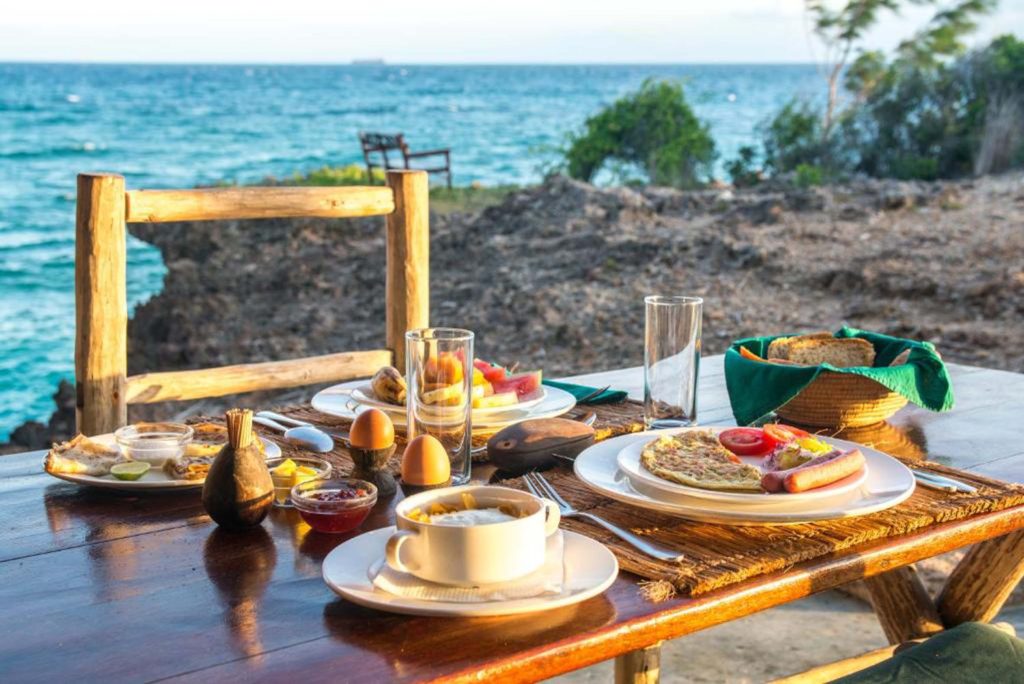
Zanzibar has earned its moniker as the “Spice Islands” due to its historic association with the spice trade. The aromatic promise of spices called to me, and I couldn’t resist the temptation to delve into this facet of the island’s identity.
Spice Plantations: A visit to one of the island’s spice plantations was not merely a sensory delight but also an educational experience. Guided tours led me through lush plantations where cloves, nutmeg, vanilla, cinnamon, and a wealth of other spices grew in their natural habitat. The intoxicating scents and flavors of these spices lingered with me long after the tour had ended.
Stone Town: A Cultural Melting Pot
The heart of Zanzibar’s cultural identity resides in Stone Town, the island’s capital. This UNESCO World Heritage Site is a tapestry woven from diverse cultural influences, from Arab, Indian, and European to African. Wandering through the labyrinthine alleys, exploring historic buildings, and immersing myself in bustling markets, I was embraced by the vibrant cultural mosaic of this unique town.
The House of Wonders: One of Stone Town’s most iconic landmarks is the House of Wonders, a historic palace built by Sultan Barghash. I roamed through its grand halls, absorbing the rich history and architectural beauty that filled the air.
Forodhani Gardens: In the evenings, the Forodhani Gardens transformed into a lively night market. The aroma of local delicacies wafted through the air, and I couldn’t resist the temptation to sample the various seafood dishes and Swahili street food. It was a true feast for the senses, a culinary exploration that transported me to the heart of Zanzibari cuisine.
Zanzibar’s Doors: The ornate wooden doors that adorned many buildings in Stone Town were a testament to the island’s multicultural heritage. Each door was a work of art, intricately carved and adorned with brass studs. I was captivated by the stories that these doors seemed to tell, each one unique in its design and symbolism.
Ticket Information and Operating Hours
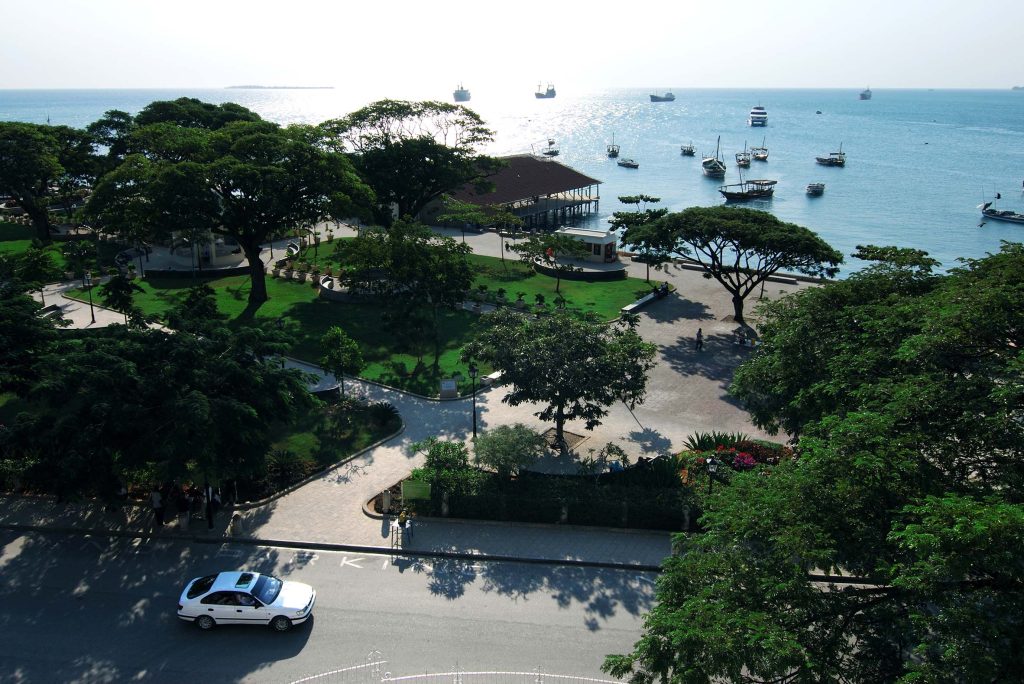
Zanzibar is an open destination with no specific ticketing requirements for entry. Most attractions, including beaches, are accessible year-round. However, it’s essential to be aware of the best times to visit Zanzibar, taking into consideration factors such as weather and tourist seasons.
For snorkeling and diving excursions, tickets and packages can be arranged through local tour operators, with prices varying. It’s advisable to make bookings in advance, especially during peak tourist seasons to secure your spot on these underwater adventures.
My Evaluation and Personal Reflections
Zanzibar, with its pristine beaches, thriving coral reefs, and vibrant culture, surpassed my every expectation. The beaches, particularly Bwejuu and Jambiani, were slices of paradise. The tranquil beauty of Bwejuu and the vibrant culture of Jambiani offered a rich contrast that made my stay unforgettable.
The underwater world of Zanzibar, experienced through snorkeling at Mnemba Atoll and Chumbe Island, was a revelation. The reefs were like living tapestries, and the marine life was a symphony of colors and forms. Snorkeling here was akin to exploring a hidden treasure trove, an otherworldly experience that left me in awe.
Exploring the spice plantations and Stone Town provided a deeper understanding of Zanzibar’s rich history and culture. The scents and flavors of the spices lingered with me, and the cultural diversity of Stone Town was a testament to the island’s unique heritage.
Zanzibar is a destination that captures the essence of paradise, both above and below the water. The beaches, coral reefs, and cultural richness make it an unforgettable place to explore. If you seek a tropical escape with a touch of history and culture, Zanzibar is the perfect choice. It’s a destination that lingers in the heart long after you’ve bid it farewell.


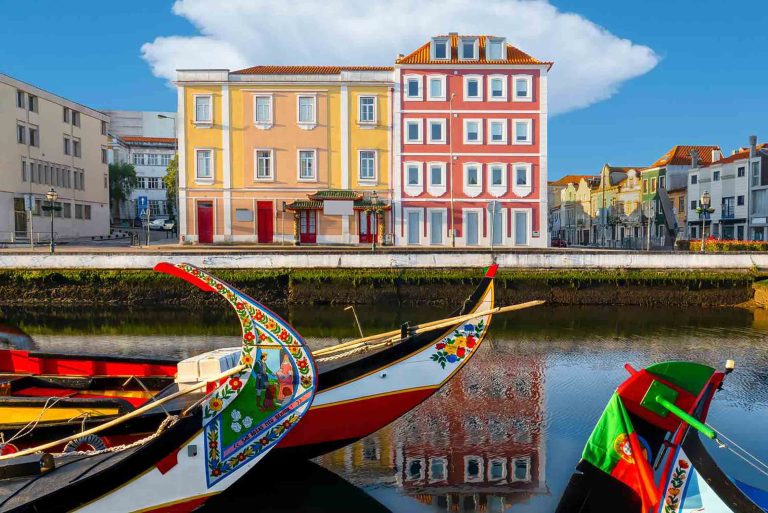
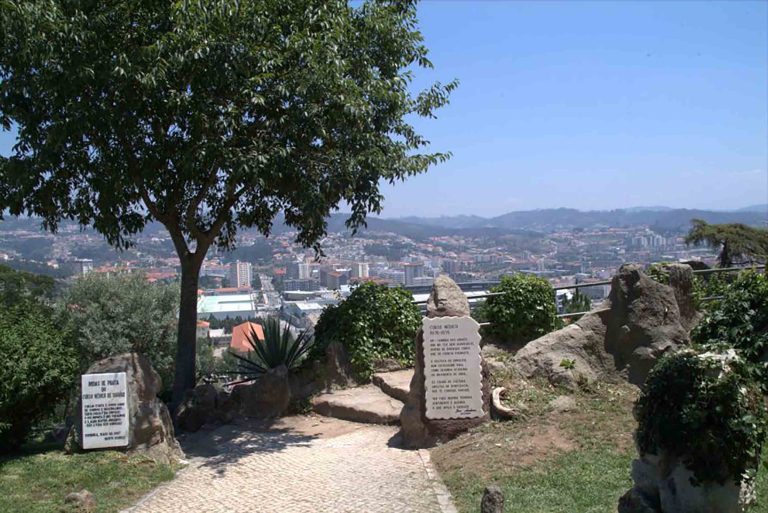




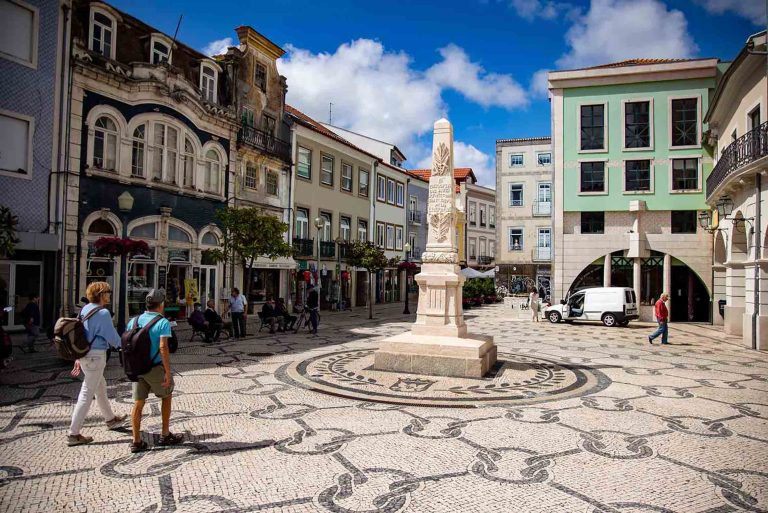

+ There are no comments
Add yours